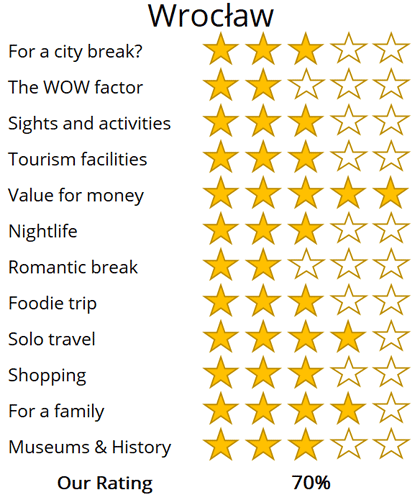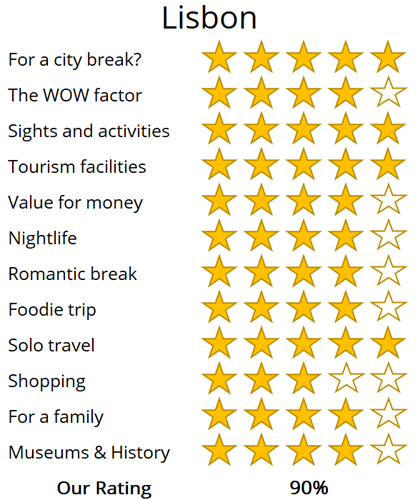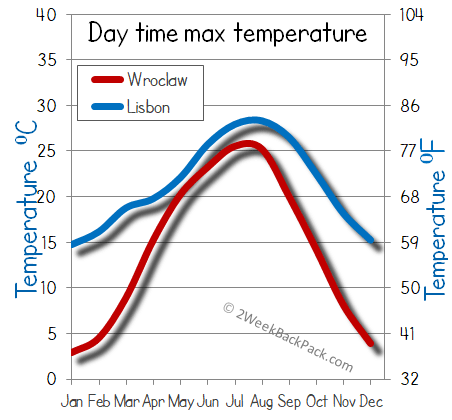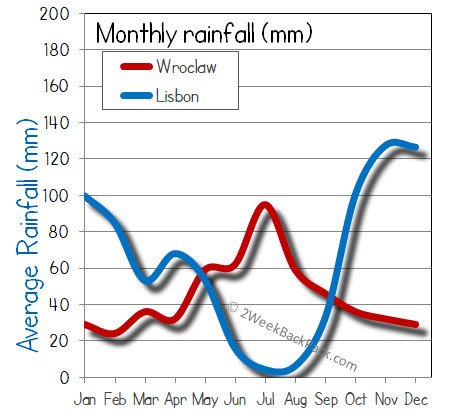WhereToGoForMyHoliday.com
The best destination comparison site!
WhereToGoForMyHoliday.com
The best destination comparison site!
Wroclaw or Lisbon, which is better for your holiday in 2024?
Wroclaw and Lisbon both offer unique and enticing experiences, but which one should you choose for your city break or holiday?
We recognise the difficulty in making this decision. While there is abundant information available on both destinations, clear guidance on which city better aligns with your travel preferences is often hard to find.
This article aims to provide an impartial comparison of Lisbon and Wroclaw, and hopefully help you to choose the best city to visit.
The article is structured into several sections, each of which can be directly accessed through the following links:
• Introduction to the cities
• Scores and ratings
• Which one should I, friends, or family visit?
• When to visit and weather
• Who is the city suited for?
• The perfect 48hours (with map)
• Tourism details (where to stay? airport details?)
Introduction to Wroclaw and Lisbon
Wroclaw is the historical capital of the Silesia region. It's been ruled and fought over and shaped by countless tribes and peoples, from the warring Slavs of the first millennium to the Habsburg emperors to the Prussian generals of the 1800s.
This makes it a strangely diverse and varied city, with Germanic townhouses and Flemish-styled mansions next to Gothic cathedrals and USSR tenements.
Wroclaw is a good-looking city. It's got a beautiful perch on the Oder River, spreading from island to island with arched bridges that recall Venice and wooded parks aplenty.
The Old Town is the anchor of it all, and a great place to wander, people watch, and drink Polish beers. Beyond come the fairy-tale spires of Cathedral Island, the colossal concrete dome of Centennial Hall (a UNESCO site), and even Zen parks inspired by Japan.
Lisbon is a progressive and liberal city, which still retains its rich seafaring history and distinctive Portuguese heritage. The city effortlessly blends history, vibrant culture and exciting nightlife into one charismatic tourist destination.
Lisbon is a city of compact variety; you can get lost in the maze of narrow streets in the Alfama district, be wowed by the grandeur of the plazas in Baixa or join the hipsters and fashionistas in the Principe Real. Close to the city are glorious sandy beaches, and Lisbon boasts one of the finest climates in Europe. This is an amazing city, which you must visit.

The historic centre of Wrocław and the Odra River
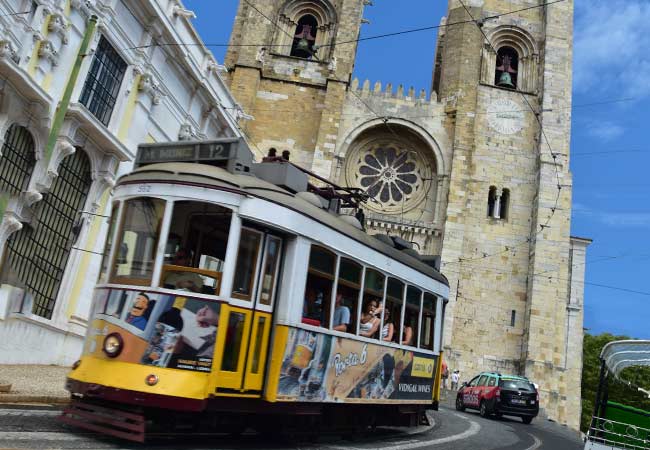
The number 28 tram passing the Se cathedral in Lisbon
High-level summary for Wroclaw and Lisbon
Do you agree with us? Why not provide your own scores for Lisbon here
Summary
Where would I journey for a personal escape?
Lisbon
Where would I send my parents for a memorable visit?
Lisbon
Where's the ideal destination for my adventurous 19-year-old cousin?
Lisbon
Where should my food-obsessed friend indulge their culinary passions?
Lisbon
Note: The above comparisons are weather-independent and are based on travel during the most opportune times of the year. Details about the ideal travel seasons are elaborated upon later in this article.
In the sections that follow, you'll find a comprehensive comparison between these two fascinating cities. This includes recommendations on the duration of stay, the best times to visit, and tailored 48-hour itineraries for each city.
The final segment delves into practicalities for your travels, such as the best airport to fly into, the optimal districts for your accommodation, and insider tips, for when you come to explore the city.
We hope that you find all of this information useful, in planning your next exciting trip!
Destination details
How long to spend each city?
Lisbon is a diverse and exciting city that you’ll need at least three days to fully see.
Many visitors also include Sintra as part of their stay, but at a minimum, but we recommend spending at least two full days in Lisbon itself.
If you are fortunate enough to have a longer stay, there are many enjoyable day trips, including the palaces of Sintra, the beach resorts of Cascais or the historic towns of Obidos and Evora.
In the summer, you could also visit the beautiful beaches along the Cascais or Costa Caparica coastlines. Best of all, these day trips can all be reached via the inexpensive public transportation.
Related articles: 3 days in Lisbon – 48 hours in Lisbon
Wroclaw may not be vast in size, but it stands as one of Poland's prominent cities. Its Old Town, brimming with charm, is perfectly navigable on foot, while an efficient tram network offers a swift tour of the key attractions for a modest sum. Generally, a day or two suffices to experience the city’s highlights, making Wroclaw an ideal destination for a brief, fly-in, fly-out weekend retreat.
For those contemplating a more extended stay in Wroclaw, consider interspersing your visit with day trips to the surrounding areas. Nearby, you can explore the forested slopes of Karpacz, visit the awe-inspiring castles along the Eagles Nest Trail, or make a pilgrimage to the sacred site of Jasna Góra.
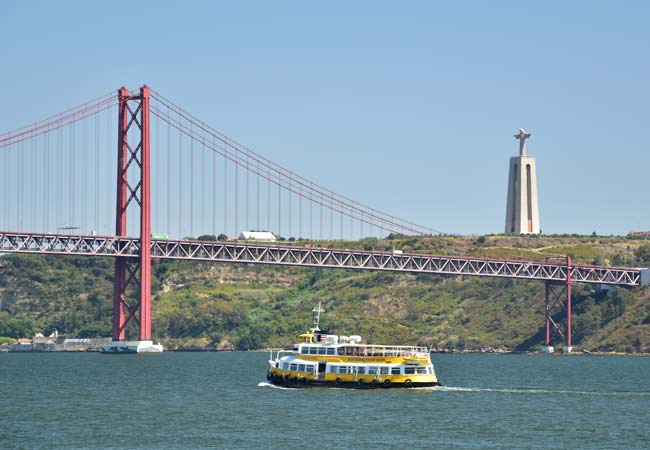
A tourist cruise boat passing beneath the Ponte 25 de Abril suspension bridge in Lisbon

There are over 350 charming dwarf statues are scattered throughout Wroclaw’s historic centre. These characterful figures even have their own tourist map, along with s tory behind each one….
Unless you're a fan of air pollution and sub-zero temperatures, Wroclaw is not the place to be in the winter. The whole of south Poland gets cold between November and March – really cold. We're talking minus 10 degrees regularly, with sudden snowfalls and freeing rain. Of course, when there is a dusting of the white stuff, the Old Town of Wroclaw can look wonderful, but recent winters haven't been so promising.
For sightseeing and enjoying the student buzz of the town, it's probably better to hold off until May. That's when the weather really starts getting good. You might have chilly evenings, but you should be able to don the shorts and t-shirts for your wanders through the city. What's more, the local university is in session, so the bars will be lively and vibrant.
Summer sees the students go home and the tourists arrive. It's a reliable period for weather, even if you have to deal with the occasional thunderstorm around early afternoon. September is just as nice, if not even better. That's when the trees of the island parks in Wroclaw start to change to yellow and ochre, lending a romantic atmosphere to the Silesian capital.
The recommended time to visit Lisbon is in the late spring and early autumn, when the city is sunny and warm, but without the summertime crowds.
Lisbon is subject to the pressures of over-tourism at times, most notably being incredibly crowded during the summer months in the popular tourist areas, such as the Belem district and Sintra.
Due to the increased popularity of Lisbon, it is becoming a year-round destination, however, be warned that the winter months can be wet and cool.
Our favourite time of year to visit Lisbon is during the first two weeks of June, when the whole city celebrates the Santos Populares festivals with street parties and traditional dances.
Lisbon has a wide appeal; there are cultural sights, a buzzing nightlife and a blossoming artisan scene. The city will appeal to young or old, either for a cultural trip or as a fun weekend away.
In the summer (May-Sep) the beaches make for a really good extension to your trip and are easily accessible from the city. There is little to fault Lisbon and most visitors leave with fond memories of the city.
If you're the sort of traveller that loves to find off-the-beaten-track cities that don't necessarily have big-name sights, then Wroclaw is sure to be right up your alley. It's not as well known as other towns in Poland but comes with local vibes and interesting neighborhoods. It's also a student city, which means the nightlife can get pumping during term times (September to December and January to June).
Wroclaw has something for those who like the great outdoors, too. Not only is it a green place with lots of parks and riverside areas to explore, but the mountains of the Karpacz and the Czech borderlands are only a short drive to the south. They've got hiking, skiing, spa towns and more.

The twin spires of Wroclaw Cathedral
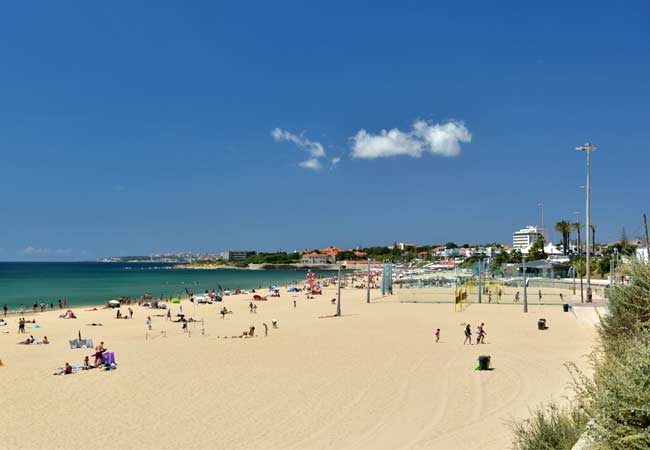
There are beautiful beaches only a short train ride away from the centre of Lisbon
There’s a lot to squeeze in for 48 hours in Lisbon.
Below is an interactive map for what we recommend doing in a 48 hour tripto the city; day 1is highlighted in green and day 2 in yellow, with optional sights in grey.
Most tours begin in the Baixa district with its grand avenues and magnificent plazas, such as the Praça do Comércio and Rossio.
In the later part of the day, start to climb the hills into the Alfama district which is a maze of medieval streets leading up to the castle. Take in one of the viewpoints close to the castle for a romantic sunset and then ride the quaint number 28 tram as it rattles through the city.
For dinner, head into the Baixa district and then for a night out, head to Barrio Alto, with its funky bars and social scene which fills the streets.
For the second day, head to the scenic Belem district, which contains the Mosteiro dos Jerónimos, and Torre de Belém, along with views across the Tejo Estuary.
For the second part of the day discover the stylish Príncipe Real and Avenida da Liberdade districts or visit the ultra-modern side of Lisbon, the Parque das Nações.
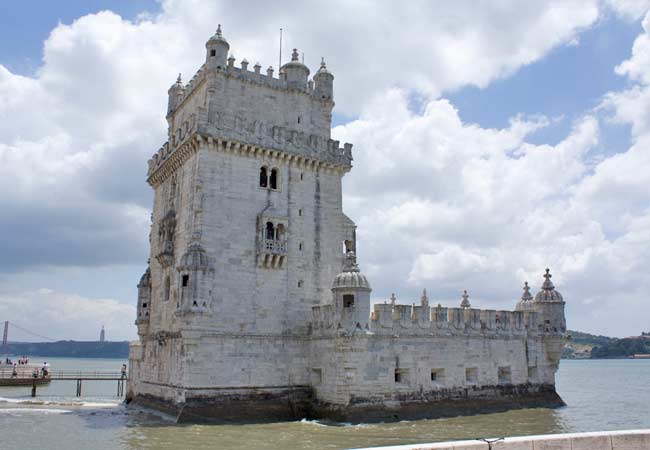
The Torre de Belém once guarded the Tejo Estuary and Lisbon
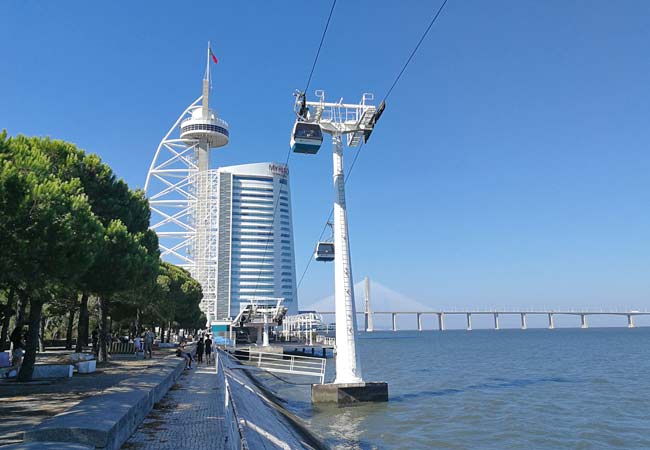
The Parque das Nações is the modern side to historic Lisbon
48hours in Wroclaw
Two days is all that's needed to explore Wroclaw from top to bottom. Most of your time will be spent in the charming Old Town area, but a few jaunts to parklands and other districts can combine with lively nights on the beer to boot…
The interactive map below shows a suggested route for the 48 hours in Wroclaw, with day 1 highlighted in green and day two in yellow.
Day 1: Every history lover, people watcher, foodie and sightseer will want to see the Stare Miasto district. That's the Wroclaw Old Town; the piece de resistance of this southern city. It begins around the wide boulevard of Piłsudskiego, passing through a few blocks of Soviet-era tenements before hitting the historic area proper. That starts in earnest by the Fosa Miejska, a centuries-old moat that was part of the town's medieval fortifications until it was destroyed by Jérôme Bonaparte, the brother of Napoleon.
On the left as you make for the heart of the quarter is the elegant Wrocław Opera House, while the leafy walks of Park Staromiejski are the perfect place to go for a picnic in the summer. Keep going north and you'll eventually arrive at the Rynek. This is the beating kernel of the Old Town, where you'll find the most amazing sights of all.
The Gothic-styled Old City Hall draws the eye first, followed by the German-built housing blocks of 1931 – considered by the locals to be among the ugliest in town! Be sure to check out the narrow alleys that weave through the middle of the square at the Sukiennice. Also keep the eyes peeled for the little dwarf statues that dot the plaza. They're a kitschy addition to the cityscape that you'll find on many random street corners.
As the afternoon turns into evening, consider settling in for a beer tasting at the hearty Spiż microbrewery. Or, head for Setka, where Communist paraphernalia adorns the walls and you can sample potent vodka with pickled herring.

The Most Tumski Bridge, where romantics leave love locks attached to the rails and throw the key in to the Odra River. To the rear is the spire of the Bartholomew’s church and the twin spires of the cathedral
Day 2: Having explored the Old Town, our second day begins with an exploration of the surrounding islands on the Oder River. There is a plethora to see, but the highlight is undoubtedly the iconic Ostrów Tumski.
Crossing the picturesque bridges to reach it, you will find yourself in the oldest part of Wroclaw.
The Wrocław Cathedral, with its towering twin spires, dominates the skyline, marking the most majestic church in the city. Inside, you can admire the exquisite stained-glass windows and the soaring vaulted apses.
From there, proceed to Słodowa Island, particularly delightful in the summer months when people gather by the riverside with their BBQ grills. Another worthwhile stop is Wyspa Piasek, renowned for its attractive chain bridges and quaint cobbled streets.
In the afternoon, take tram numbers 2, 4, or 10 from the Old Town to Centennial Hall, a magnificent UNESCO World Heritage Site celebrated for its revolutionary concrete architecture and a dome reminiscent of Rome's Parthenon.
Adjacent to it are beautiful gardens, with the serene Ogród Japoński as the highlight – an ideal spot for contemplation and reflection on Wroclaw's rich history.

The Centennial Hall may cause divisive opinions, but it was one of the first large reinforced concrete structures that ushered in the era of Modernism.
Lisbon is well set up for a holiday and is a great destination for a weekend break. The city has a lot to offer; it is safe and is comparatively inexpensive, especially when compared to other major European cities.
Lisbon is serviced by one airport, which is only 7 km from the city centre, and is connected to the metro network (€1.60 single). There are many flights to Lisbon, but there can be high demand in the summer along with the obligatory increase of prices.
For accommodation, there are the well-defined popular areas of the Alfama, Baixa and Chiado districts, with a range of hotels and rental rooms. There is a diminishing supply of low budget options, even for rental rooms, as demand is always high.
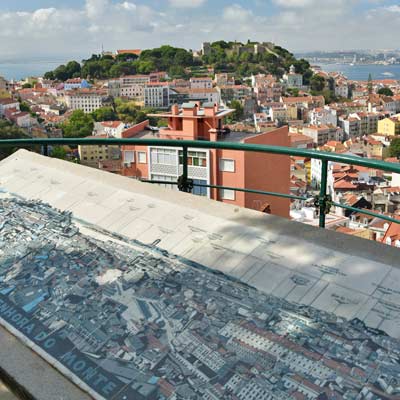
Lisbon is spread across 7 hills, which means there are many great viewpoints, and lots of hills to climb!
When exploring the city, all of the main tourist areas are centrally located and can be reached on foot,he only exception is the Belem district, to the west. There are a lot of steep hills in Lisbon, and sightseeing can be very draining in the intense summer sun.
The ever-expanding Wrocław–Copernicus Airport is now served by loads of routes coming from across Poland and Europe. It's even possible to arrive on long-haul connecting flights thanks to Poland's flag-carrying LOT airline. There's a bus that leaves the terminals for the centre of town every 20 minutes throughout the day. Tickets cost 3 PLN and the ride is around half an hour.
You can also arrive from Krakow, Warsaw or Katowice by rail. Wroclaw's train station is considered a work of art in itself, so be sure to check out the yellow-painted façade and its grand crenulations as you leave.
Getting around Wroclaw should be easy. The town centre isn't only walkable but a real pleasure to explore on foot. There are lovely bridges linking the little isles on the Oder River, parks connecting the banks of the old city fortifications, and plenty of pedestrianised areas within the confines of the Old Town.

Many of Wrocław oldest builds, were constructed use red bricks
To get out to the Centennial Hall, Wroclaw Zoo, or other districts, you can make use of the efficient tram network. Buy tickets at the MPK Wroclaw machines at any bus or tram stop and then validate them as you board. Basic fares cost 3 PLN per ride, but you can also score passes for several days using the Urbancard website.
Hotels in Wroclaw are generally all located within the ring road of Piłsudskiego. Roughly speaking, the closer you get to the Rynek square the better the location, though staying right on the main plaza might be noisy at night. There are also some lovely boutique stays and B&Bs to find north of the Oder River.
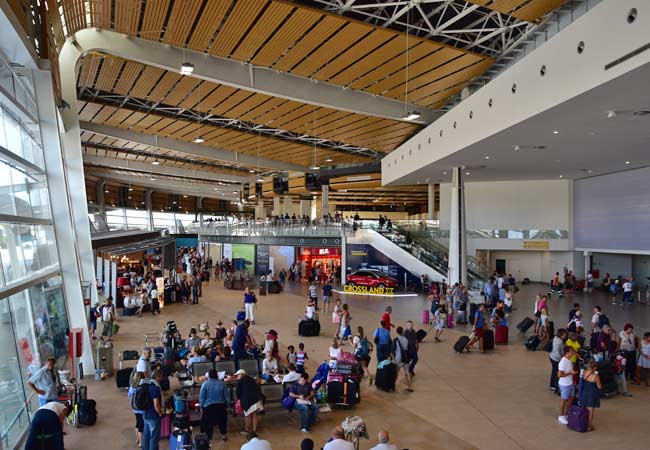
oh we were stuck in the airport!

Copenhagen was a bit expensive...

All we did was drink beer in Brussels...
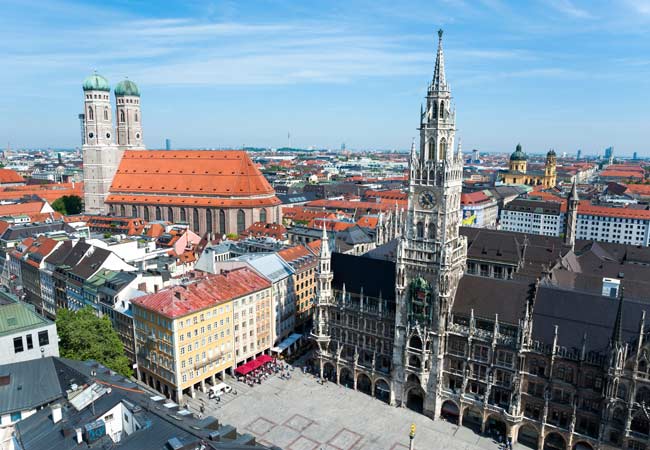
Muncih was crazy

And we got so burnt!
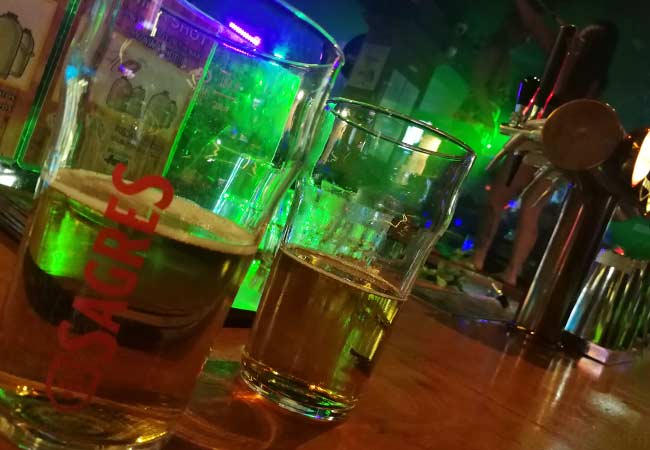
Remeber that night in Rome

oh we were stuck in the airport
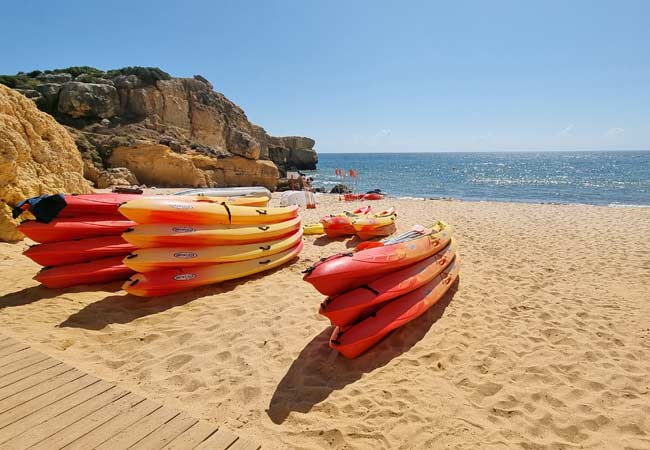
So much fun kayaking

Berlin and that group from Austria!

There was such a view from that church

And we got so burnt!

Munich was eventful, wasn't it!

Such a view from that cathedral in Florence

Lisbon was such so much fun

Last summer was so much fun .... x

Remeber that night in Rome

Lisbon was such so much fun

Such a view from that cathedral in Florence

Munich was eventful, wasn't it!

And we got so burnt!

Remeber that night in Rome

All we did was drink beer in Brussels...

Berlin and that group from Austria!

Can't wait to go back to Dubrovnik

Remember that boat ride in Prague

Copenhagen was a bit expensive...
